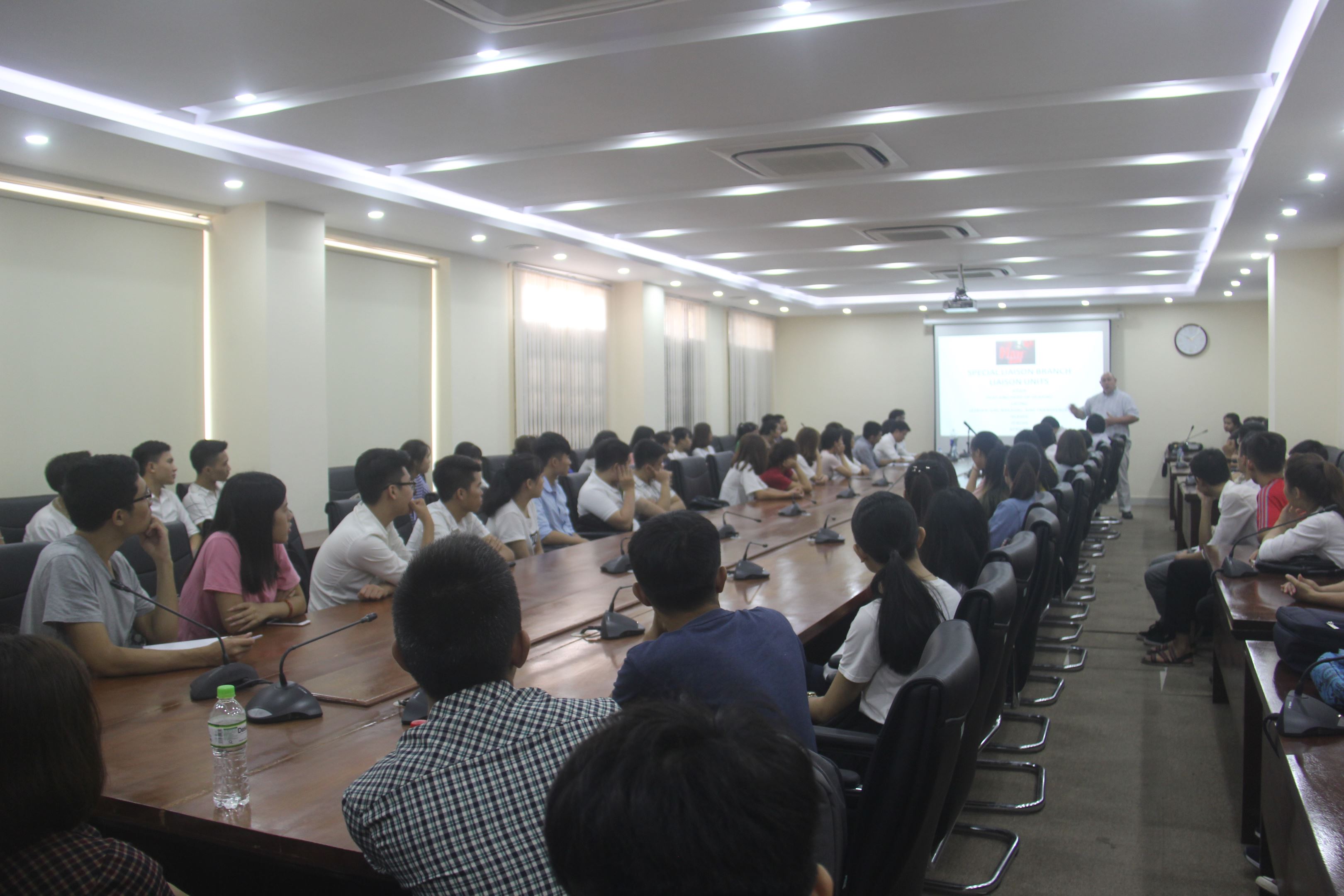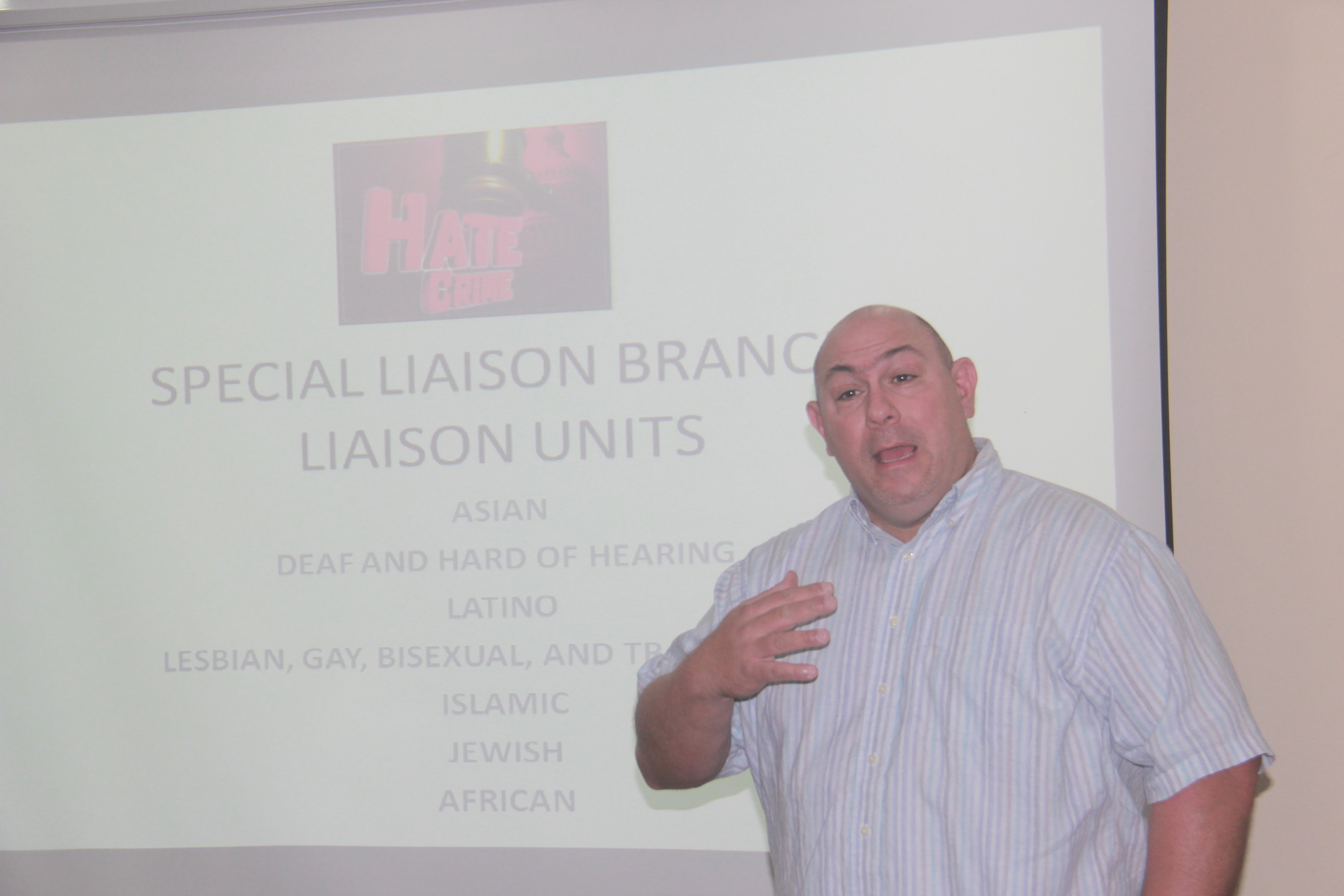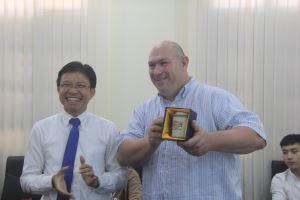At the beginning of his presentation, Mr. Brett A. Parson introduced the socio-cultural context of the United States. The United States is often referred to as a “melting pot”, a country with diverse races, cultures, ethnicities, and languages. However, this diversity gives rise to many conflicts, resulting in hateful acts directed at groups of people who differ in one of the above areas. Because of socio-cultural barriers, or because of distrust in the police force, they do not receive the same support as mainstream citizens. As a police officer, Mr. Brett A. Parson’s duty is to protect the rights of such communities.

Auditorium view
Throughout American history, there have been many laws enacted to protect the rights of disadvantaged communities and to combat hate and discrimination. The first was the Civil Rights Act of 1968, which prosecuted acts that violated another person’s race, color, religion, or national origin; and protected victims when engaging in one of six types of activities: enrolling in school, maintaining a public place/facility, applying for a job, serving as a jury in a state court, or voting. Next was the Violent Crime Control and Law Enforcement Act of 1994, which increased penalties for acts of hate based on race, color, religion, national origin, ethnicity, or gender. The Church Arson Prevention Act of 1996 prohibited the defacing or destruction of any tangible religious property on the basis of race, color, or ethnicity. Most recently, the Matthew Shepard and James Byrd Hate Crimes Prevention Act of 2009 was enacted to address hate crimes motivated by gender, sexual orientation, gender identity, or disability. Notably, the 2009 Act was named after two victims who died as a result of discrimination (Matthew Shepard was gay and James Byrd was black).

Mr. Brett A. Parson gives some examples of hateful behavior.
From the above laws, Mr. Brett A. Parson defines a hate crime as an intentional act, expressing hatred, discrimination or prejudice of the offender based on the status of a (group of) victims. There are many areas where discrimination is likely to occur, from race, skin color, religion; to gender identity, marital status, physical disability, political orientation... To illustrate the situation of this type of crime in the United States, Mr. Brett A. Parson used the results of a survey of 7,121 victims of 5,818 acts of hate in 2015. Of these, 59.2% of the cases were related to discrimination based on race, ethnicity, ancestry; 19.7% were religious discrimination; 19.8% were gender discrimination; and 1.2% were disability discrimination. It is from these surveys that the police force can identify groups of people who need protection.
However, Mr. Brett A. Parson emphasized that identifying and prosecuting hate crimes is not simple. Because the police officer must prove the suspect's motive for committing the crime based on objective facts, circumstances, or patterns of related behavior. A set of criteria has been created to determine criminal behavior, including signs such as: at the place where the incident occurred, the victim was a member of a minority group compared to another group; the victim participated in activities to support his group; or indicators such as comments and statements coming from the suspect. To illustrate, Mr. Brett A. Parson recounted a real incident in which two suspects were accused of robbing a victim who was a member of the LGBT community. According to witnesses, the two suspects made homophobic statements, so they were considered to be motivated by gender bias.
After the presentation, Mr. Brett A. Parson received and answered questions from the audience about the content of some legal concepts; hatred and prejudice among the police; and the development of anti-hate laws in the United States. Through answering the above questions, Mr. Brett A. Parson clarified that, like any other legal system, US law has been and is being perfected and cannot become perfect overnight. Likewise, no human being can completely escape prejudice, but can only be discovered and overcome over time.

Associate Professor Dr. Hoang Anh Tuan took a souvenir photo with Mr. Brett A. Parson
Author:Tran Minh
Newer news
Older news